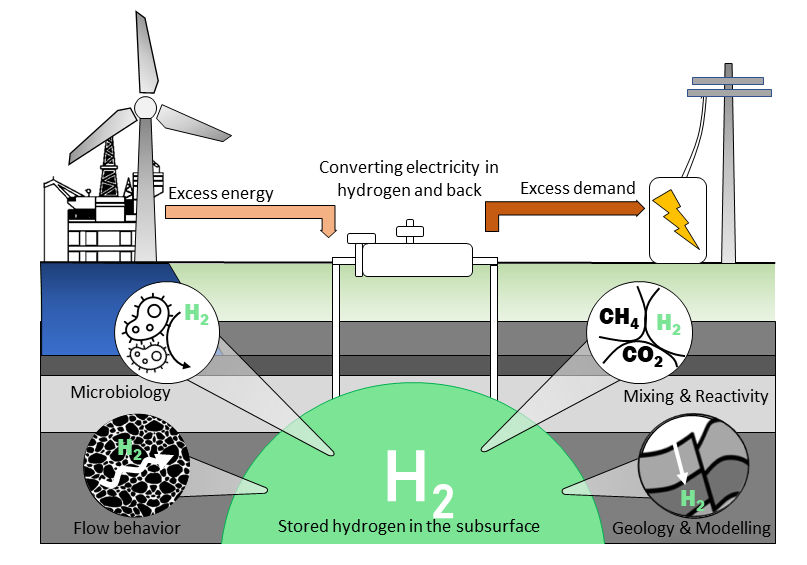To decrease emissions of greenhouse gasses into the atmosphere, we have to move away from fossil fuels into a green and sustainable society. Hydrogen can play a big role in this, as it is a universal energy carrier and can be used to fuel cars or ships, heat buildings, melt steel or make electricity. When it burns mostly water comes out.
For this transition, we will need a lot of hydrogen throughout the year. But where can we store all this hydrogen during the summer days when we do not need as much? Underground hydrogen storage, or UHS as it`s called for short, offers us the possibility for storing energy in the subsurface at a very large scale.
For Norway, UHS is a big opportunity to use existing know-how and infrastructures from the oil and gas industry and move into a green future, protecting jobs and our environment!
In this text we will explain what UHS is and put a light on some of our major research goals on the topic.
What is underground storage and how does it work?
UHS is a concept for large-scale energy storage where excess hydrogen is pumped and stored in different deep geological formations. Salt caverns, aquifers and depleted hydrocarbon deposits (gas reservoirs) in the North Sea can be used for this type of storage. There the hydrogen can stay for days, weeks or months, until it is needed. When it is pumped back, it can be either directly used or transformed into electricity later. This means, UHS is like a big battery in 1000-meter depth! Also, it is very safe because the storage formations are so deep and oxygen-free, there is no risk for humans or nature.
Why do we need UHS?
Our energy demand is pretty steady with some annually variations. Renewable energy like electricity from wind, water or solar is, however, a very variable resource. What can we do when we need energy but there is no wind? Going for 100% renewable energy will not work without energy storage where surplus electricity is used to produce hydrogen by electrolysis. Hydrogen can then be pumped and stored and when the energy production is low, hydrogen can be used to again produce electricity. This will give us a steady energy production throughout the year.
Is UHS ready?
Although there a handful UHS sites in the world already, there are still open questions we have to resolve first before we can start employing UHS in Norway. These research question span from basic knowledge on physical properties to site-specific questions on hydrogen movement and -loss.

